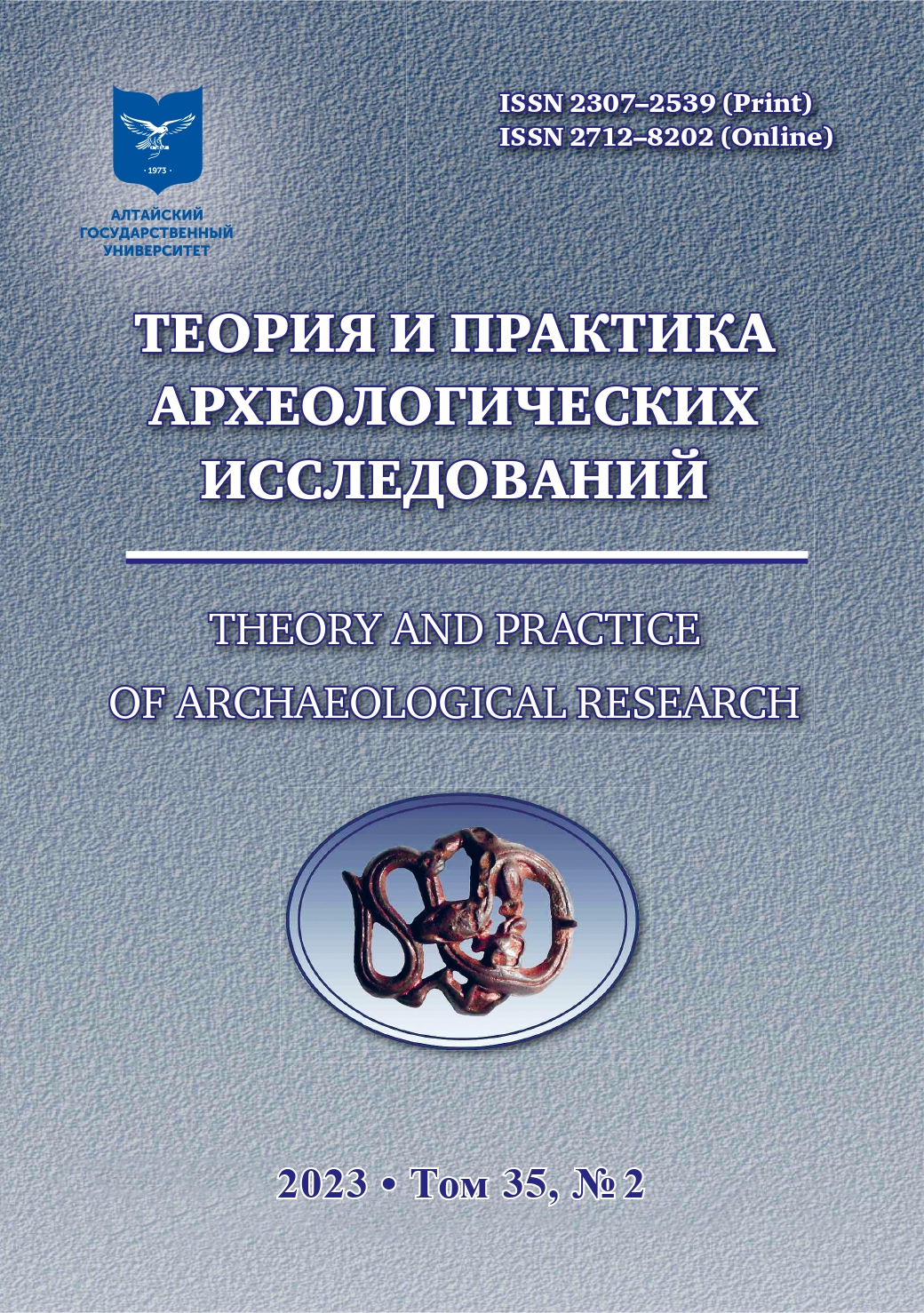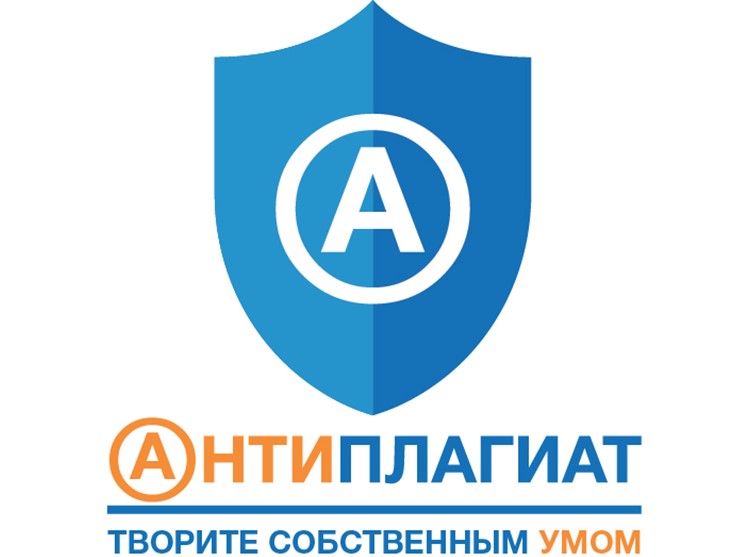NEW DATA ON THE AGE OF ANCIENT IRRIGATED AGRICULTURE IN TUVA
Abstract
According to the conducted research, the Republic of Tuva is an area of ancient agriculture, which was facilitated by the geographical location and natural conditions, first of all, the mountainous terrain and the abundance of rivers in this territory. Practically in all river valleys of the region there are various irrigation systems corresponding to the capabilities of technology and the organization of social labor of certain historical periods. Here you can observe all the stages of irrigation development. According to В.А. Latynin’s classification, it is the stage of early irrigated agriculture, the stage of the simplest types of irrigation channels that turn into complex fan irrigation systems. The presence of the rudiments of agriculture in the Neolithic is evidenced by the finds of pollen of cultivated barley aged 6–5 thousand years in the valley of the Small Yenisei, made by S.B. Potakhin. Mining and ore production contributed to the development of agriculture in the Bronze Age — there are large copper deposits in the bowels of Tuva. According to the conducted research, developed irrigated agriculture existed in this territory in the Xiongnu period (Ubsunur basin, SOAN-9199; East Tuva Highlands, SOAN-9201). In 2022, radiocarbon dating was obtained for the first time, confirming the presence of irrigated agriculture in Tuva in the 1st millennium BC, Scythian-Saka time.
Downloads
Metrics
References
Weinstein S.I. Report on Archaeological Excavations in Tuva in 1956. Funds of the National Museum named after Aldan-Maadyr of the Republic of Tyva. Kizil, 1956 (In Russ.)
Kirichenko D.A. Anthropological Essay of Tuva (Bronze Age — Middle Ages). Baki universitetinin x b rl ri. 2005;3:194–243. (In Russ.)
Kiselev S.V. Ancient History of Southern Siberia. Moscow : Akademizdat, 1951. Pp. 255, 513, 570. (In Russ.)
Kyzlasov L.R. Ancient Tuva. Moscow : MGU, 1979. 208 p. (In Russ.)
Latynin B.A. Questions of the History of Irrigation of Ancient Fergana. In: USSR Academy of Sciences. In: A Brief Description of the Institute of the History of Material Culture. Issue 64. Moscow : Izd-vo AN SSSR, 1956. Pp. 15–25. (In Russ.)
Mandelstam A.M. Early Nomads of the Scythian Period on the Territory of Tuva. In: Steppe Strip of the Asian Part of the USSR in the Scythian-Sarmatian Time. Moscow : Nauka,1992. Pp. 178–196. (In Russ.)
Potakhin S.B. Section “Chilannyg”: New Data on the Nature of the Tuva Basin in the Second Half of the Holocene and the Origin of Neolithic Agriculture. In: Proceedings of the II International Symposium of the Northern Steppe Eurasia: Strategy of Conservation of Natural Diversity and Steppe Use in the 19th Century. Orenburg : IPK “Gazprompechat’”, 2000. 422 p. (In Russ.)
Prudnikova T.N. Natural Patterns of Development of Irrigated Agriculture in Ancient Tuva: Abstract. Dis. ... Сand. of Geographical Sciences. Barnaul, 2005. 20 p. (In Russ.)
Prudnikova T.N. Agriculture of the Xiongnu Epoch in Central Asia (new data on the results of radiocarbon dating). In: Proceedings of the XV Meeting of Geographers of Siberia and the Far East. Irkutsk : Izd-vo In-ta geografi i SO RAN, 2015. Pp. 139–142. (In Russ.)
Prudnikova T.N. Ancient Agriculture and Features of Paleogeography of the Ubsunur basin. Geografi ya i prirodnye resursy = Geogr. and Nature res. 2017;1:143–151. (In Russ.)
Prudnikova T.N. On the Issue of Ancient Agriculture of the Arid Territories of Central Asia: Agriculture of the Ubsunur Basin. Arheologiya, etnografi ya i antropologiya Evrazii = Archaeology, Ethnography and Anthropology of Eurasia. 2018;46(1):66–75. (In Russ.)
Prudnikova T.N. The Tarim Depression and the Transformation of its Landscapes. Аridnye ekosistemy = Arid Ecosystems. 2019;25(3):5–15. (In Russ.)
Prudnikova T.N. Ancient Agriculture and Transformation of Landscapes of Central Asia. St. Petersburg : Scientia, 2020. 196 p. (In Russ.)
Prudnikova T.N., Prudnikov S.G., Spivakov S.G. Ancient land Reclamation in the South of Siberia — Irrigation Systems of the Bronze Age in Tuva. In: Materials of the Regional Conference on Desertifi cation of Steppe Territories. Abakan : Zhurnalist, 2008. Рp. 61–65. (In Russ.)
Prudnikova T.N., Semenov A.V. Ancient Agriculture in the Upper Reaches of the Yenisei. Valleys of R.R. Cherbi, Tapsa. In: Bulletin of the Institute of the History of Material Culture of the Russian Academy of Sciences (Conservation Archaeology). Vol. 11. St. Petersburg : Institut istorii material’noj kul’tury RAN, 2021. Рp. 199–202. (In Russ.)
Ore Formations of Tuva / V.V. Zaikov, V.I. Lebedev, V.G. Tyulyush, V.JI. Grechishcheva, K.S. Kuzhuget. Novosibirsk : Nauka, 1981. Pp. 54–74. (In Russ.)
Semenov V.A. Okunevsky Sites of Tuva and the Minusinsk Basin. Comparative Characteristics and Chronology. In: Okunevsky collection. St. Petersburg : Petro-RIF, 1997. Pp. 152–160. (In Russ.)
Sunchugashev Ya.I. The Sites of Irrigated Agriculture in Ancient Khakassia. Krasnoyarsk: KGU, 1989. 100 р. (In Russ.)
Copyright (c) 2023 Т.Н. Прудникова

This work is licensed under a Creative Commons Attribution 4.0 International License.
Theory and Practice of Archaeological Research is a golden publisher, as we allow self-archiving, but most importantly we are fully transparent about your rights.
Authors may present and discuss their findings ahead of publication: at biological or scientific conferences, on preprint servers, in public databases, and in blogs, wikis, tweets, and other informal communication channels.
Theory and Practice of Archaeological Research allows authors to deposit manuscripts (currently under review or those for intended submission to ABS) in non-commercial, pre-print servers such as ArXiv.
Authors who publish with this journal agree to the following terms:
- Authors retain copyright and grant the journal right of first publication with the work simultaneously licensed under a Creative Commons Attribution License (CC BY 4.0) that allows others to share the work with an acknowledgement of the work's authorship and initial publication in this journal.
- Authors are able to enter into separate, additional contractual arrangements for the non-exclusive distribution of the journal's published version of the work (e.g., post it to an institutional repository or publish it in a book), with an acknowledgement of its initial publication in this journal.
- Authors are permitted and encouraged to post their work online (e.g., in institutional repositories or on their website) prior to and during the submission process, as it can lead to productive exchanges, as well as earlier and greater citation of published work (See The Effect of Open Access).








2.jpg)




